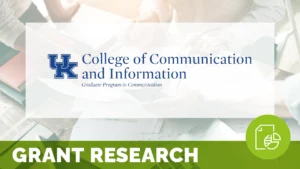The Geographical Implications of Nursing Education Resources and Quality Outcomes

The nursing shortage is a long-time dynamic recognized in the United States healthcare landscape. Because of this shortage, much research has exemplified the undue stress that the lack of nurses can have on organizational outcomes. Utilizing spatial data of U.S. nursing homes and nursing schools and CMS’s Nursing Home Compare data, this research report yields important information regarding the implication of the nursing shortage.
Related content
-
 Policy & Measurement
Policy & MeasurementLiving with COVID-19 in the community during the first wave of the pandemic: Lessons from patients for healthcare providers and policy makers
This qualitative descriptive study explores patients’ experiences of living with COVID-19, in the community, during the early stages of the pandemic. Between October 2020 and April 2021, fifteen semi-structured, video-recorded interviews were conducted, via Zoom, with participants in five Canadian provinces. Participants self-identified as having had a confirmed or suspected case of COVID-19. The constant
Learn more -
 Policy & Measurement
Policy & MeasurementAnd the Survey Says…: A Qualitative Exploration of the Perspectives of Nurse Managers Who are Accountable for Patient Experience Measures
By examining nurse manager accountability for patient experience measures, this study seeks a deeper understanding of nurse managers’ perceptions of patient experience measures and how these measures drive organizational communication behaviors. Funded through The Beryl Institute’s Grant Program for scholars, Lisa Huddleston, Ph.D., explores whether hospitals use patient experience scores as intended — to guide
Learn more -
 Policy & Measurement
Policy & MeasurementEnhancing Post-Visit Communication: A Quality Improvement Initiative
With grant funding from The Beryl Institute, Briargate Outpatient Specialty Care Clinic at Children’s Hospital Colorado launched a quality improvement project to tackle the decline in patient and family experience scores concerning post-visit communication. By implementing targeted interventions, the clinic increased the percentage of families who felt well-informed about handling questions after visits from 72%
Learn more
